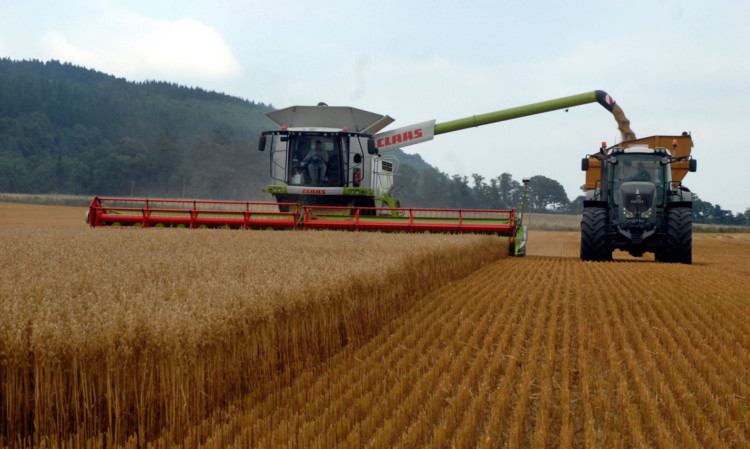Back in the spring few people would have gambled much on the 2013 harvest being comfortably secured by the end of the third week of September, but that is more or less what has happened.
Yields may not have been any more than average over the piece, and prices are well back on the year, but it is a case of “harvest home” with only some later parcels left to combine.
Andrew Stephen, managing director of WN Lindsay, Scotland’s largest privately owned grain merchant, said: “I can safely say that over my 40 years in the trade this has been the best harvest from a merchant’s point of view.”
Moisture contents had been low and specific weights exceptionally good.
Nitrogen contents had been more variable, with the north-east and Moray coast producing low nitrogen barleys.
Angus and central Scotland had shown more variability, with East Lothian tending to have high nitrogens.
East Lothian had taken the pain on yields, too, with average yields around the two tonnes per acre mark.
In the north-east and central areas they had been largely in the 2.25 to 2.6 tonnes per acre band.
“As far as varieties are concerned Concerto has stood up well, without the skinning problems of recent years.
“We have seen some really beautiful barley with specific weights up to 70kg per hectolitre (kg/hl),” Mr Stephen said.
Supply and demand was more or less in balance in Scotland, mainly because of rejected crops in the Lothians and Borders dropping out of the equation.
Winter wheats were very good quality. Milling wheat samples had good hagberg levels and high protein but, because of over-supply, biscuit-making samples were only attracting a premium of £2 per tonne.
Mr Stephen added: “Oats have been over-produced this year but I am expecting a better balanced harvest next year, with a more normal proportion of winter crop likely to be sown.”
WN Lindsay had invested £1 million this year in its store at Stracathro near Brechin. Two new sheds with a capacity of 18,000 tonnes had been erected and intake was now 12,000 tonnes per week.
Even so, the problem had been finding enough transport to keep the dryers going in such a low moisture season.
Other merchants speaking to The Courier highlighted the same problem.
There had been a huge investment across the country in better central stores with high capacity intakes and dryers.
Farmers had matched this level of investment by purchasing larger combines capable of harvesting huge daily tonnages, but there were simply not enough lorries available to make the most of all this new capacity.
At Montrose, Bruce Ferguson, general manager of both Angus Cereals and the cooperative’s marketing agent Openfield, said he had faced a similar problem.
The unusual season had seen oilseed rape ripening at the same time as spring barley, and even in some cases wheat.
“Having such a high percentage of the harvest to handle in a short period did put us under some pressure.
“Overall quality has been good, especially in Aberdeenshire and the Black Isle, with more variation in quality and yield as you move south into the Lothians and Borders.
“Some yields have been pleasing, but to describe the 2013 harvest as ‘vintage’ or ‘a bonanza’ is wrong. In a lot of cases yields have been just average,” he said.
Many thin crops had, however, shown amazing compensatory growth during the summer.
This had been the case with many wheat crops, but especially so in oilseed rape.
In a complete contrast with last year there has been very little evidence of high free fatty acid (FFA) levels in oilseed rape.
There had been some very high specific weights in wheat, with some samples over 80kg/hl.
Robin Barron, general manager at East of Scotland Farmers at Coupar Angus, said: “It is certainly not the hardest harvest we have had.
“Malting barley yields have been around 2.5 tonnes per acre but there has been quite a range.
“We have noticed that land which carries livestock and has higher organic matter has done better.
“The physical characteristics of all types of grain have been good.
“There were some issues at the start of the season with high nitrogens in malting barley, but the customers moving the top limit from 1.65% to 1.7% made a big difference.”
This is the first harvest for the cooperative’s new grain dryer and store. A doubling of drying capacity combined with low moisture grain had meant the biggest problem was bringing in enough crop each day to keep the equipment working overnight.
“It is not a bad problem to have,” said Mr Barron.
“Much of our tonnage is Concerto and Belgravia. Both performed well, but is worth remembering that ultimately it is Concerto which produces the highest spirit yield for the distillers.”
